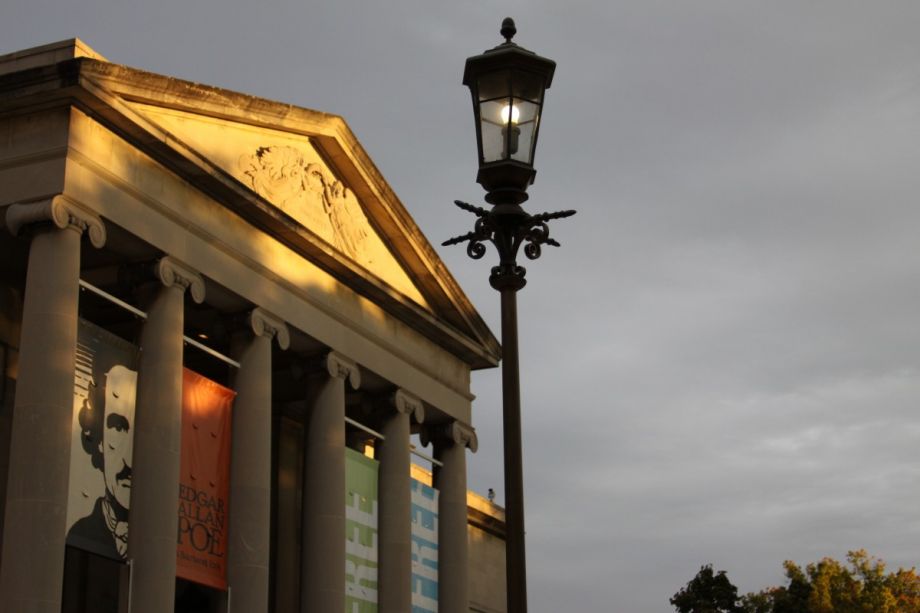The Baltimore Museum of Art is selling seven works of art by white men—including Andy Warhol—so it can afford to purchase contemporary art by women and artists of color.
Five of the pieces will be auctioned by Sotheby’s this month, and the other two —a Warhol and a work by Robert Rauschenberg—will be put up for private sale, the Baltimore Sun reported. The museum expects to fetch at least $12 million for the works, which it plans to use to diversify the collection.
Predicting that the moves would be “absolutely transformative,” BMA director Christopher Bedford told Artnet that “the most important artists working today, in my view, are black Americans.”
Bedford also said that he believes it’s important for museums to reflect their cities’ populations. The BMA currently owns “relatively few artworks” by African-Americans, the Sun said.
“I don’t think it’s reasonable or appropriate for a museum like the BMA to speak to a city that is 64 percent black unless we reflect our constituents,” he told Artnet. “I think we are in a fortunate historical moment in that my existential urge to do something that matters, the constitution of Baltimore, and the most important artists working today all come together.”
Selling art from a museum, called “deaccessioning” in the art world, is not unusual. Bedford told the Sun that most museums deaccession annually. What’s different is what BMA is committing to purchase: art by rising women artists and artists of color. “To state it explicitly and act on it with discipline—there is no question that is an unusual and radical act to take,” Bedford told Artnet.
The museum will put the proceeds from the non-Warhol art into an endowment for contemporary art. “I want to make sure my successor has a sizable war chest to continue the mission,” Bedford said. Proceeds from the two Warhols—one of which is expected to fetch $2 to $3 million at auction; and the other will be put up for private sale—will be spent sooner, over the next three to five years.
There’s an urgency to the purchasing, because “black art” is suddenly hot in the collectors’ world, Artnet says. The BMA’s previous endowment allowed it to spend about $475,000 on acquisitions a year, but prices by rising (or suddenly appreciated) black artists are skyrocketing. Sam Gilliam, a Color Field painter, was selling paintings for $10,000 a decade ago. Last September one of his works sold for $684,5000, Bloomberg reports.
The Baltimore Museum of Art isn’t the only museum playing catch-up. New York City’s Museum of Modern Art acquired more than 400 works by black artists in the last decade. Chief curator of painting and sculpture Ann Temkin told Bloomberg that museums now must “literally pay for the fact that we weren’t as actively engaged in this a decade ago.”
The full list of the work the BMA is selling includes two Warhols (“Oxidation Painting” and “Hearts”), one by Franz Kline (“Green Cross”), one by Robert Rauschenberg (“Bank Job”), Kenneth Noland’s “Lapis Lazuli” and “In-Vital,” and Jules Olitski’s “Before Darkness II.” According to Artnet, Bedford asked BMA’s contemporary art curator a year ago to choose work to deaccession, and in February the board of trustees voted unanimously to approve the sale. The museum owns more than 90 other works by Warhol, two dozen Rauchenbergs and a dozen Klines, Bedford added, and the works chosen to deaccession were considered less consequential or rarely shown (the Rauschenberg mural was too large to display regularly, Artnet reported).

Rachel Kaufman is Next City's senior editor, responsible for our daily journalism. She was a longtime Next City freelance writer and editor before coming on staff full-time. She has covered transportation, sustainability, science and tech. Her writing has appeared in Inc., National Geographic News, Scientific American and other outlets.
Follow Rachel .(JavaScript must be enabled to view this email address)








